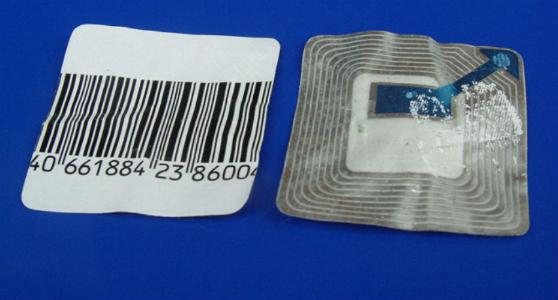Metamaterials can protect merchandise where standard security tags fail
A case study by Emily Glovera, Paul Keatleya and Robert J Hickena
aUniversity of Exeter
The problem
So called Electronic Article Surveillance (EAS) tags are used globally to protect retail merchandise from theft. A significant part of the EAS market is occupied by 8.2 MHz label tags, with detection infrastructure embedded globally. However, these tags cannot protect products with metallic packaging, polarisable liquids, or electronics.

Our solution
Our patented design could be used to replace existing 8.2 MHz tags, as it can protect all products including those that the current infrastructure cannot. Examples are in particular goods in metal packaging, such as bottles of alcohol, cans of paint, tools with metallic boxes.
The design consists of a foil microwave cavity, which is filled with a ferrite core, and a dielectric-filled extension that is subsequently wrapped about the core, depicted in the image below. The cavity resembles an organ pipe acoustic cavity, closed at one end, which supports a quarter-wavelength transverse electromagnetic resonance. The ferrite and capacitive sections of the cavity also form inductive and capacitive components of the tag when described as an LC resonator. This picture allows the desired frequency to be readily predicted simply from the tag dimensions.
The research surrounding this project was carried out at the University of Exeter, which is also where the initial prototype of this technology was produced.

Why use a metamaterial?
Metamaterials concepts are used in this technology to reduce the size of the tag through the reduction of the cavity size. By treating the resonator as a “meta atom”, a discrete solution can be produced, while keeping the resonance frequency of the tag consistent with those which are currently in use.
References
